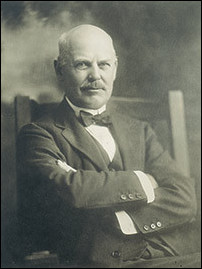By: Petr Vanýsek
 The discovery of an electric arc can be tied to the use of an electrochemical energy source. Sir Humphry Davy described in 1800 an electric discharge using electrochemical cells1 that produced what we would call a spark, rather than an arc. However, in 1808, using an electrochemical battery containing 2000 plates of copper and zinc, he demonstrated an electric arc 8cm long. Davy is also credited with naming the phenomenon an arc (Fig. 1). An electric arc was also discovered independently in 1802 by Russian physicist Vasily Petrov, who also proposed various possible applications including arc welding. There was a long gap between the discovery of the electric arc and putting it to use.
The discovery of an electric arc can be tied to the use of an electrochemical energy source. Sir Humphry Davy described in 1800 an electric discharge using electrochemical cells1 that produced what we would call a spark, rather than an arc. However, in 1808, using an electrochemical battery containing 2000 plates of copper and zinc, he demonstrated an electric arc 8cm long. Davy is also credited with naming the phenomenon an arc (Fig. 1). An electric arc was also discovered independently in 1802 by Russian physicist Vasily Petrov, who also proposed various possible applications including arc welding. There was a long gap between the discovery of the electric arc and putting it to use.
Electrochemical cells were not a practical source to supply a sustained high current for an electric arc. A useful application of this low voltage and high current arc discharge became possible only once mechanical generators were constructed. Charles Francis Brush developed a dynamo, an electric generator, in 1878, that was able to supply electricity for his design of arc lights. Those were deployed first in Philadelphia and by 1881 a number of cities had electric arc public lights. Once that happened, the application and new discoveries for the use of the electric arc followed. Electric arc for illumination was certainly in the forefront. First, electric light extended greatly the human activities into the night and second, public street electric lights, attracting masses of spectators, were the source of admiration, inspiration, and no doubt, more invention.
The electric arc became an essential tool leading to a number of discoveries in science and technology and to a number of technological processes. In the anglophone and certainly in the American awareness of the invention of artificial light, it is Edison and the light bulb that come to mind; without doubt the light bulb evokes the notion of the glass envelope of Edison’s construction. But the invention of useful artificial electric light precedes Edison’s patent of a carbon filament of 1879 by a few years. Before the light bulb, electric arc lighting became quickly popular, but it had many disadvantages. Among these, the most significant was that the graphite rods, as they burned off, became shorter, the distance between them longer, and the arc eventually flamed out. Pavel Yablochkov came up with a design for how to move the rods closer, in an automated fashion, to maintain a constant arc. He received in 1876 a French patent for this self-regulated electric arc lighting design. The high temperature in the arc made it useful for lighting, but made it equally useful for many technical operations as well. Electric arc welding became practical and was demonstrated at the International Exposition of Electricity in Paris in 1881. Heating and melting with an arc was practiced around that time as well. The heat, melting, and simultaneous electrochemistry in the melt led to aluminum preparation by Hall and Heroult, in 1886 and 1888, respectively.2 Various experiments with electric arc followed, one of which led to the great discovery of Edward Goodrich Acheson, who invented manufacturing of carborundum and patented the process in 1893.
Acheson (Fig. 2) was born March 9, 1856 in Washington, Pennsylvania and was raised in Pennsylvania coal country. He quit school at the age of 16 in order to work and support his family when his father became seriously ill and subsequently died in 1873. Acheson labored on the railroad, but spent his after-work hours studying science and electricity, and conducting his own homemade experiments. One story tells about his practical and profitable electrochemical experiments at this time. He purchased inexpensive yellow-metal pocket watches, used the family silverware forks (made actually from silver at the time) as anodes, and silver-plated the watch cases, which he then sold for a profit. He designed a dynamo and was interested to find employment with some manufacturer of electrical equipment. He approached Edward Weston (of Weston Standard Cell fame) who was manufacturing electroplating dynamos in a shop in Newark, New Jersey, but was turned down for employment. In 1880 Acheson was hired by Thomas Edison as a draftsman and technician at Edison’s Menlo Park New Jersey laboratories.
Read the full article in the spring 2017 edition of Interface.

